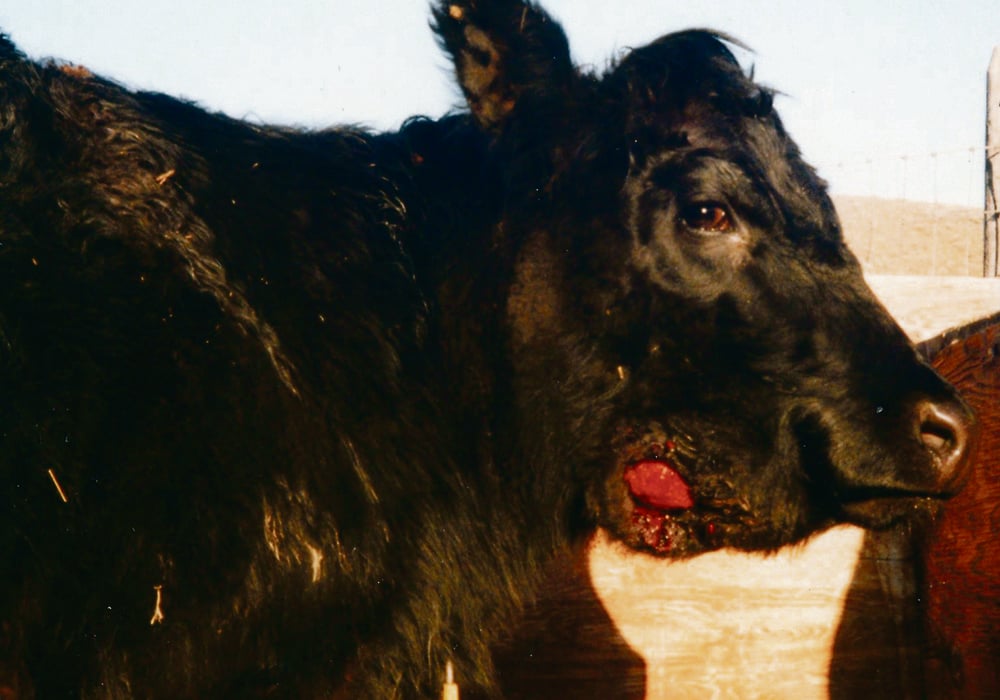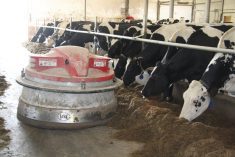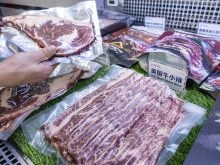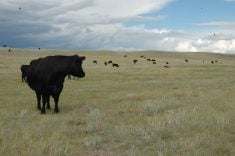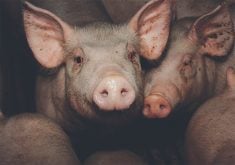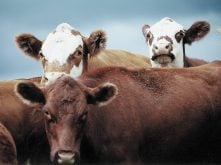There are two types of lump jaw in cattle, with different causes.
Soft-tissue abscesses can result from wounds in the mouth or embedded foreign bodies like sharp grass seeds. These are easy to treat by lancing, draining and flushing out the infection.
By contrast, a bone infection is harder to eradicate and treatment may not be successful.
Bill Lias of the Interstate Vet Clinic in Brandon, South Dakota, says bone infections usually involve the lower jaw but occasionally occur on the upper jaw and are caused by a bacterium called Actinomyces bovis. The infection is called Actinomycosis.
These bacteria are present in the environment, often in the soil, and enter the bone through a penetrating wound in the mouth.
A mouth wound could be caused by anything sharp, such as wire or other foreign material baled in the feed, or chewing on sticks or eating abrasive feed. When there are multiple cases on one farm, it’s usually due to coarse feed, or sharp material in the feed. It’s usually a deeper wound than what would typically cause a soft tissue abscess.
Bacteria may also enter the bone through the dental sockets when young animals are shedding their baby teeth and the permanent molars are starting to come in.
“This may be why the condition is seen most often in young cattle, such as two- and three-year-olds,” says Lias.
“When baby teeth are being shed, the sockets may be exposed to injury, such as from sharp material in the feed, before the new teeth are fully erupted to fill those sockets. Stickers or other material may poke into them and become a route of entrance for bacteria. Both kinds of bacteria, the ones that cause bony lump jaw and the ones that cause soft-tissue abscesses, reside in the cow’s mouth, and any mouth injury may give them opportunity to invade.”
Infection and inflammation in the bone results in a bony enlargement, usually in the area of the central molars, says Lias. Some lumps develop swiftly, within a few weeks, while others enlarge slowly over several months. Unless treated, the bony infection continues, and the lump keeps getting bigger. It may eventually break through the skin and discharge sticky fluid through one or more openings.
Lias says the ongoing infection may eventually damage the teeth in that area of the jaw. Those teeth may become loose and the animal has trouble chewing. Generally it affects the cheek teeth. It can sometimes affect the maxilla, the top bone of the jaw where the top teeth are located, but it usually occurs in the mandible, the bottom jawbone, creating a large, slow-growing, firm mass of bone.
Treatment is difficult.

“The traditional use of sodium iodide solution, given IV, is still considered one of the better treatments,” says Lias.
“Success of treatment hinges on how early this condition is detected. If you catch it early and treat it aggressively there is more chance for success. When there’s already a big bony lump it’s tough to halt the infection.”
Producers often wonder whether to treat the cow or sell it. If it’s pregnant they generally give the cow time to have the calf and raise it before selling.
“If it’s a young cow and in pretty good shape when you notice the early signs, she’d be a good candidate to treat. If she’s had 10 calves and has a large, advanced swelling and bony lump on the jaw, you might not want to bother with treatment and just salvage her. You might keep her around to raise one more calf if she hasn’t lost too much weight,” he says.
“Most cows can get along with a bony lump for a while, but as the bone becomes more damaged, the teeth may become loose, making it difficult to chew. Once the cow starts losing weight she won’t milk very well, and won’t raise a very good calf. If the cow isn’t doing well, the calf isn’t going to do well,” says Lias.
Abscesses in the soft tissue are more common, and generally caused by other bacteria.
“Treatment is more successful in these infections. If it’s a soft tissue abscess you can lance and drain it and the infection will clear up,” says Lias.
Systemic antibiotics are generally not needed because it’s a local infection.
“The main thing is to open up the abscess and establish drainage. There may be some scarring, accumulation of granulation tissue and a residual small bump, but most cases clear up nicely,” he says. Sometimes the abscess will break and drain on its own, but it will heal faster if lanced and flushed.
There are few preventive options except to avoid feeding coarse and weedy hay.
Soft tissue abscesses can occur at any age.
“We see some of lumps in baby calves as well as older animals, if they are chewing on coarse feed, whereas the bony lumps don’t appear until later in life — in two-year-olds or older,” Lias says.
“One way to tell the difference is whether the lump is movable in the soft tissue or firmly attached to the bone. Once you’ve felt the difference between the two types of lumps, they are easy to differentiate. The bony lump is hard and immobile — an enlargement of the bone itself —whereas the soft tissue abscess can be moved around under the skin,” he says.
“Often when you palpate those you can tell they have a softer centre and you know there’s pus in there. This centre can be lanced and drained. Restrain the animal and tie the head off to the side so it can’t move around while lancing the abscess.”
If the abscess is low on the jaw or in the throat area, producers must be careful not to slice into the jugular vein or carotid artery and if they are not comfortable with the procedure, they should have it done by a veterinarian, he says.
The incision should be made at the lower edge of the softest area, for best drainage. Make a vertical slit, which is less likely to cut blood vessels than a horizontal slice.
The slit should be long so that it will stay open for drainage.
“The abscess needs to be able to drain for several days, so you don’t want it sealing over and getting big again. Be fairly aggressive in how much you open it, or it will close up and you’ll have to do it again.”
This might be one reason to have a veterinarian do it if producers aren’t experienced.
Some abscesses can become large, with a lot of pressure and pus that will squirt out when lanced.
“After draining out the pus that comes readily, flush out the rest with a large syringe. I use a dilute solution of betadine, mixing it with warm water and squirting it into the opening. This will flush as much of the bacteria as possible out of there, and allow it to heal,” says Lias.

